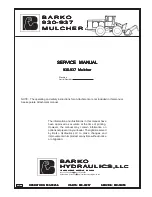
9
Correct use
• Use
For mixing/stirring liquids with low to high vis-
cosity by using various stirring tools.
Intended use: Stand device (Chuck downward).
• Range of use (indoor use only)
- Laboratories
- Technical colleges
- Pharmacies
- Small-scale production
Unpacking
• Unpacking
- Please unpack the device carefully
- In the case of any damage a detailed report must
be sent immediately (post, rail or forwarder).
This equipment is suitable for use in all areas except:
- Residential areas
- Areas that are connected directly to low-voltage
supply network that also supplies residential areas.
The safety of the user cannot be guaranteed:
- If the instrument is operated with accessories
that are not supplied or recommended by the
manufacturer
- If the instrument is operated improperly contrary
to the manufacturer’s specifications
- If the instrument or the printed circuit board are
modified by third parties.
• Delivery scope
- an
RW 47 digital
overhead stirrer
- an operating instructions
- four hexagonal socket screws
- a hexagon socket offset screw key
- a chuck key
- a warranty card.
Useful information
You can set speed from 57 to 1300 rpm with the
50 Hz (mains frequency) and speed from 69 to
1560 rpm with the 60 Hz (mains frequency). The
unit may heats up during use. The ample cooling
surfaces on the motor serve to distribute and radi-
ate the heat as evenly as possible.
You can also use large mixing vessels together with
IKA
®
stands without any problem.
The unit comes without a connection cable be-
cause the user’s installation means that it is not
possible to issue a standard length cable due to
the different sizes of premises. Experts can deter-
mine the pin assignment from the wiring plan.
The output shaft is not designed as a hollow shaft
and allows inserting the stirring element until it
stops. It is important to ensure that the stirrer
shank is securely clamped in the chuck.
Drive
The motor can be infinitely adjusted via a friction
wheel drive unit but is operated in one position
only. The power output, rotational speed and
torque of the motor are regarded as constant and
are optimized for this operating position. After
the friction wheel drive the motor power output
is transmitted to the output shaft of the stirrer via
either the first or second stage of the subsequent
manually adjustable toothed gear train.
Neglecting all losses, the power at the output shaft
during power transmission (conversion) is always as
great as the power output of the motor. The gear
train merely provides rpm and torque conversion,
which can be described in purely theoretical terms
by the characteristic curve plotted in
Fig. 2
.
Friction wheel wear is kept low by a helical clutch
matched to the gear train. The down-pressure re-
quired at the friction wheel is adjusted by the helical
clutch according to the moment acting on the stirrer
shaft. A low torque results in a low down-pressure;
a high torque results in a high down pressure.



































